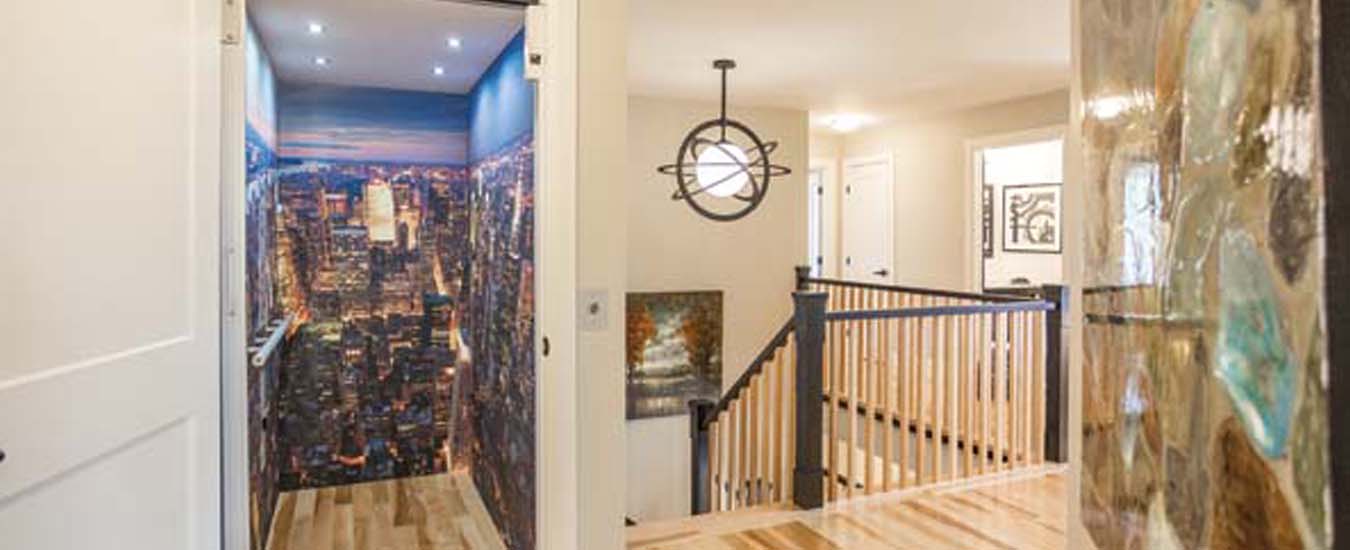More Atlantic Canadians are considering in-home elevators as a way to remain at home as they get older
A residential elevator in her parents’ home has given Kimberley Monette’s mother, who falls frequently due to Parkinson’s disease, a greater sense of freedom. It’s giving peace of mind to the rest of her family.
“Mom can physically go up and down the stairs but she never knows when an imbalance will occur, so we put an elevator in to prevent her from falling down the stairs. She can now carry things up and down the stairs—laundry and other things—giving her a sense of independence again. For my father and the rest of us in the family, we feel much more secure knowing that she’s safe. This allows my parents to live as closely as possible to the way things used to be,” says Monette.
While installing a residential elevator may seem an unusual step, it’s becoming more popular for homeowners who want to stay in their own homes as they get older. As the general manager of Family 1st Medical, a Nova Scotia-based company that provides in-home medical care products and services throughout the Maritimes, Kimberley Monette is seeing the trend first hand. “We’re hearing from people who are older and facing mobility issues, but we’re hearing from younger people too. People are investing a lot more in their homes now and view an in-home elevator as much more affordable than perhaps they would have at one time.”
Devin Oliver, an elevator mechanic who works with Family 1st in the company’s Antigonish office, says there has been a surge in interest in residential elevators and lifts in recent years. “When I think back seven or eight years ago, I would only do one or two quotes a month for a residential elevator; now it’s my five-day week, full-time job. People are reading more about it and researching their options online. They see the benefits.”
Given the demographics of the Atlantic region, a greater interest in residential elevators and lifts makes sense from both a comfort and economic standpoint, says Martin Livingston, project co-ordinator with Cresco, a house construction company in Bedford, NS. “In the long term it will probably save the provinces in terms of resources as people make adaptations in the home to allow them to be able to stay in their homes longer. It’s called aging in place… if you plan on staying in your home as long as you can, an elevator is a lot cheaper than paying for long-term care in most situations.”
For the past four years, Cresco has included an in-home elevator in its grand prize show home as part of the QEII Foundation’s fall home lottery fundraiser. Custom-built by Cresco, the grand prize home features a home theatre, gym and an elevator that stops on three levels, plus the garage. This year’s show home is the fourth that Cresco has built for the lottery with an in-home elevator. As part of the requirement that the show home feature an accessible design, the 5,000-plus square-foot house also includes a deck-mount soaker tub, a zero-threshold shower and wider hallways and doors to accommodate a wheelchair.
“A lot of people go through that show home... and it gets them thinking about their options for aging in place. What we keep hearing from people is that installing an elevator is not as expensive as they thought it would be, and the operational costs are negligible, it’s hardly any more expensive to run than any other appliance in your home,” says Livingston. “When you think about it, people will put $10,000 of granite in their homes without thinking too hard about it, but will hesitate for some reason when it comes to spending money on the safety features. This is a safety feature. It may be for you and your present or future mobility issues, but you don’t know who might come visit.”
Ron Swan, a manager with Lawton’s Home HealthCare’s accessibility services, says he is hearing from a growing number of homeowners, some in their 40s and 50s, who are thinking now about how they can adapt their home to make it more accessible for the future.
“It’s been really increasing over the past five or so years. It’s become almost a standard in higher-end new home construction,” Swan says.
For those who don’t want the elevator just yet, but want to leave their options open, designing the floor plan so that closets line up on the various levels of the home makes putting an elevator in much easier when the time comes, Monette says. “It’s smart; it’s planning for the future and what you might need going forward.”
Retrofitting an older home with an elevator can sometimes be a bit tricky, but there are always options, Swan says.
Prices vary but most residential elevators are in the $30,000 to $45,000 range, plus a recommended annual maintenance package, which generally runs in anywhere from $500 to $1,200 a year, depending on the model and type of elevator. Materials used for the finish also affect the bottom line, but can make a huge difference in terms of the unit blending seamlessly into the décor of the home—something more homeowners are requesting.
“It used to be people just wanted a simple lift to get from one floor to another,” says Oliver, reflecting back on his early years with Family 1st Medical. “About four or five years ago customers started asking for higher-end fixtures and finishes. They want it to look as nice as possible.”
